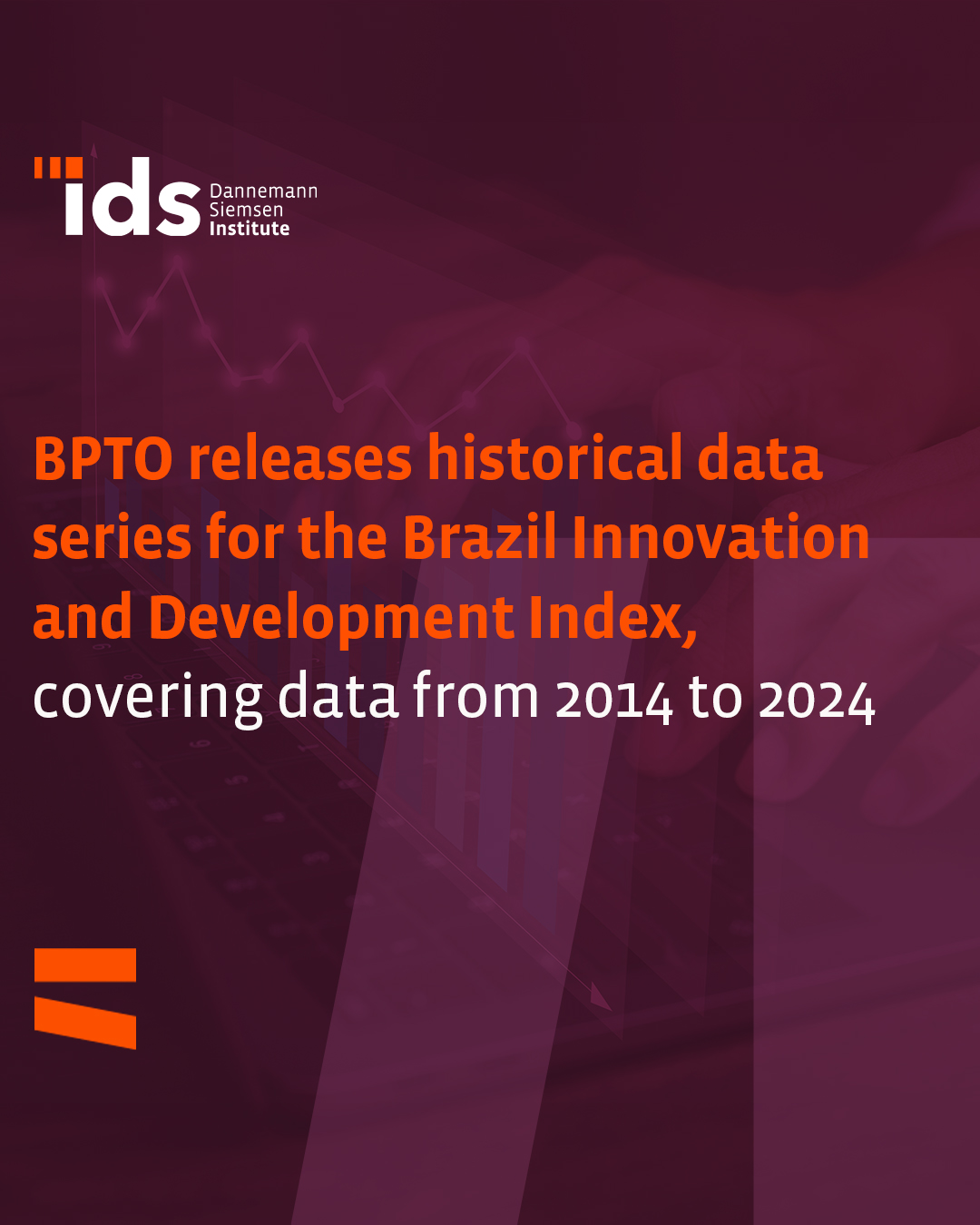20 de maio de 2025
Share
BPTO releases historical data series for the Brazil Innovation and Development Index, covering data from 2014 to 2024
On May 12, 2025, the Brazilian Patent and Trademark Office (BPTO) published the 2014-2024 historical series of the Brazil Innovation and Development Index (IBID). The report, titled “Innovation and Development: A Strategic Reflection in Light of the Correlation between IBID, GDP, and HDI,” presents an analysis of data collected over ten years to assess the performance of Brazilian states and regions in the field of innovation, from a continuous temporal perspective. In addition to identifying innovation trends and cycles, the document also examines its correlation with other factors, such as socioeconomic development.
In the document, the Gross Domestic Product (GDP) and the Human Development Index (HDI) were used to represent development, while the IBID was employed to measure innovation performance in the states. To compare the three indices, the Pearson correlation model was used, a tool that analyzes the relationship between two variables through a numerical value ranging from “-1 to +1.”
The statistics demonstrated a positive correlation between IBID and HDI (0.75), and between IBID and GDP (0.60). A high innovation index (IBID) tends to result in economic growth (GDP) since innovative businesses generally increase productivity, reduce costs, and expand income. Likewise, innovation drives factors such as health, safety, and mobility, so a high IBID positively impacts the HDI.
Regarding the identification of the performance of states and regions in the field of innovation over time, the report presents an analysis divided into General IBID, Contextual IBID, and Resultant IBID. In the General IBID, the same seven Federal Units make up the ranking of the most innovative economies in the country over the past decade, with São Paulo maintaining the top position. The South and Southeast regions occupy the top six spots on the list, except for Espírito Santo, which varies between the eighth and ninth positions. The Midwest region ranks in the intermediate range, followed by the Northeast and North regions. From 2014 to 2018, Rio de Janeiro held the second position on the list, but from 2019 onwards, it appeared between the third and fifth places in subsequent years. In that same year, Paraná, which ranked sixth in 2014, moved up to the second position, succeeded by Santa Catarina in later years.
Still regarding the General IBID, in the context of regions, with the exception of the Northern region, which shows greater variability among states, the study indicates that the regional leaders in innovation have remained stable for most of the analyzed decade: Southeast (São Paulo, since 2014), Midwest (Federal District, since 2014), South (Santa Catarina, since 2020), and Northeast (Rio Grande do Norte, since 2021).
Regarding the Contextual IBID, an indicator that assesses the structural factors that make a state or region more or less conducive to innovation, the Southeast and South regions have maintained the top positions in the annual rankings among Brazilian states throughout the decade. Compared to the General IBID, there is an improvement in the relative performance of the Midwest region.
From a regional perspective, São Paulo leads in the Southeast, and the Federal District leads in the Midwest throughout the historical series. In the South, Santa Catarina has established itself as the leading innovative economy since 2020. In the Northeast, Rio Grande do Norte has taken the regional lead since 2021, while in the North, Tocantins has occupied this position since 2021.
Regarding the Resultant IBID, which directly measures the outcomes generated by innovation activities, the states of the Southeast and South regions continue to occupy the highest positions in the annual rankings throughout the historical series. Compared to the General IBID ranking, Resultant IBID indicates better performance by the Northeast economies.
Thus, in the context of the Resultant IBID, from a regional perspective, São Paulo and the Federal District continue to lead in the Southeast and Midwest, respectively over the decade. In the South, Santa Catarina has held the top position since 2020. In the North region, the states of Amazonas and Rondônia alternate in regional leadership throughout the historical series.
The document can be accessed via the link: Innovation and Development: a Strategic Reflection in Light of the Correlation between IBID, GDP, and HDI
Note: For quick release, this English version is provided by automated translation without human review.
